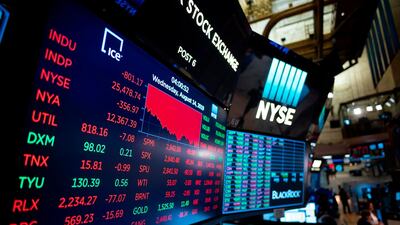The past fortnight has been one of continued uncertainty about the global economic outlook, with mixed data and mixed news about the coronavirus, increasing anxiety about US-China relations and the fate of the White House’s fiscal stimulus bill.
While equity markets’ overall defiance of economic fundamentals remains, we are beginning to see some hesitancy as the all-time high for the S&P 500 Index comes into view. Other markets are also capturing attention including gold, which is seeing strong gains on the back of global liquidity and uncertainty about the outlook for more traditional markets in a coronavirus-dominated world.
Although last week ended with better-than-expected US jobs data, the past fortnight contained dreadful second quarter gross domestic product figures in most major economies, a result of the global lockdowns that occurred during the quarter. Annualised quarter-on-quarter growth in the United States showed the economy contracted by a whopping 32.9 per cent, with consumption falling 34.6 per cent, and the year-on-year rate down by 9.5 per cent. The story was even worse in the eurozone, with a year-on-year contraction of 15 per cent.
After these shocks, the fact that the US unemployment rate fell to 10.2 per cent in July was certainly welcome, dropping from 11.1 per cent in June and the record high of 14.7 per cent in April.
However, in common with recent counter-intuitive market behaviour, the good news was interpreted somewhat cautiously by the markets, with stocks on Friday muted on the assumption it would lessen the urgency in Washington to reach a fiscal stimulus deal. Indeed, the week ended without a fresh aid package, with the uncertainty compounded by worries over relations with China after President Donald Trump issued executive orders against transacting with Tencent and ByteDance.
After gains earlier in the week, Friday’s caution was also driven by profit-taking, especially with the S&P 500’s all-time highs now within sight. Such hesitancy was not only in evidence in Friday’s price action, but also present underneath the headlines of the S&P 500 having its best month in a decade in July.
Despite rallying to just short of its February all-time highs, fund flows reported by Bloomberg showed investors withdrawing $42 billion (Dh154.2bn) from exchange-traded funds and mutual funds last month – the most since 2008 – with a further $3.7bn being withdrawn over the past week alone.
Such outflows amid record price highs suggest that concerns about corporate earnings, fresh stimulus measures, US-China relations and the US election in November may finally catch up with the bull market, which should not come as a surprise considering how long these issues have been overlooked.
With money starting to exit equities and bonds offering slim returns, it comes as no surprise that other markets have moved into the limelight, with the gold price reaching a record high last week of $2,070 per ounce. As funds withdrew money from equities in July, it was reported that investors put nearly $3bn into gold towards the end of that month, one of the largest inflows on record.
Gold’s attractions are not difficult to identify in a Covid-obscured world. Some of the most obvious sources of uncertainty include doubts about the global economic outlook, concerns for an eventual upturn in inflation, the debasement of the dollar and fiat currencies by zero, and negative interest rates.
But in a world of almost infinite central bank quantitative easing, gold is not the only safe-haven asset where the liquidity will end up. The same conditions that are favourable for gold are also likely to be positive for other alternative assets. Bitcoin and other cryptocurrencies, for example, also saw sharp rallies in July and, according to some analysts, could be on the cusp of overcoming its “credibility hump” with institutional investors.
But until there is a clearer picture about the shape of the global recovery, gold and some other alternative assets could continue to prosper. The risk to them will come when the Covid-19 threat dissipates, but even then it may take a while to reverse sentiment until the overhang of central bank liquidity is withdrawn, something that could take many more years.
Tim Fox is a prominent regional economist and financial market analyst



